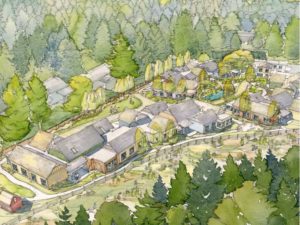“You never change things by fighting the existing reality. To change something, build a new model that makes the existing model obsolete” R. Buckminster Fuller
Our long-term care system is broken and it needs to change! Recent news reports from long term care homes in Ottawa and elsewhere highlight the urgent need for transformation. It is time to stop trying to repair a system that is broken and think about what quality care should look like for those living in long term care.
Many strategies have been tried to repair the system such as changes in policies, more education for staff, increased oversight by owners and government departments, and stronger evaluation practises. While these are worthy measures, they have not changed or prevented terrible incidences to occur. This is not to say that there are not compassionate, competent staff who work in long term care homes.
In fact if you ask staff how they feel after their shift, most will say that they did the best they could in a system which does not allow them to spend time with their residents in order to provide quality care. They go home tired, exhausted, and wishing that things could be different. Most will say, “If only there were more staff, more activity programs, and less regimentation, perhaps I could make a difference in the work I do.” Certainly more staff, and more funding would help, but would it really change what is currently happening? Is it time to look at a new way of organizing how long term care is delivered?

Hogeway Dementia Village, Holland
In March of this year, CBC news reported on an alternative model of elder care, Hogewey Dementia Village in Penetanguishene, Ontario. The concept originated in Holland in 2007 and caught the attention of health care professionals in Ontario and Alberta. Hogewey has a grocery store, a theatre, a barber shop, gardens and community gathering places. It looks less like a sterile hospital environment and more like a cozy little neighbourhood. The only twist is that many of their residents live unaware that their orderly community is actually a nursing home for people with severe dementia. The concept is all about “social inclusion,” something that’s often missing from existing long term care homes. Residents are encouraged in this environment to continue their lives and focus on what they can still do. By normalizing life, especially for persons with dementia, it will help reduce outbursts and promote positive feelings thus enhancing quality of life. For full news article go to: https://www.cbc.ca/news/canada/calgary/dementia-village-alzheimers-alberta-calgary-gerontology-1.4024693
The Hogewey Dementia Village is just one innovative model of elder care available that enhances quality of life. The Alzheimer Society of Canada has identified other models within Canada that are innovative and seem to be offering a “home” where the quality of life is being enhanced for the residents. More research needs to be done but our understanding is that these “homes” do not cost more than the traditional long term care home model. There is no need to re-invent the wheel. There are innovative models of care that already exist in Canada and elsewhere. What is needed is recognition of the need for significant change in our present long term heath care system and a willingness to act! According to the Ontario Long Term Care Association, currently 90% of residents living in Ontario long term care homes have some form of dementia.
Please note: The authors of this blog are not endorsing any particular model of care. We are offering this blog as information and to provide an impetus for change and action. If you agree with what is written and want to take action, then you are encouraged to write to your local newspapers, write letters to your politicians, and speak out at public forums which address long term care homes. You can make a difference! For easy reference, links to MPPs and MPs:
https://www.ontla.on.ca/web/members/member_addresses.do?locale=en https://lop.parl.ca/ParlInfo/Compilations/HouseOfCommons/MemberByPostalCode.aspx?Menu=HOC











